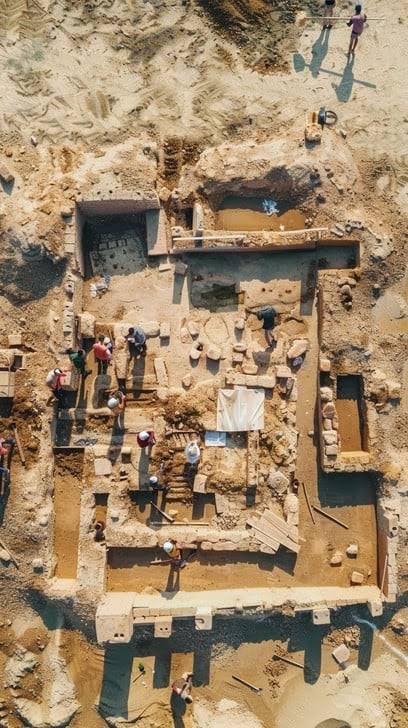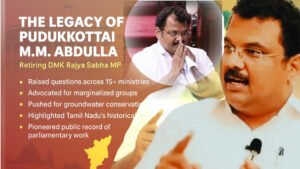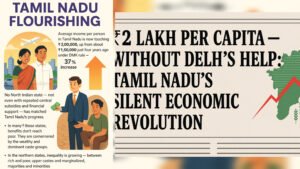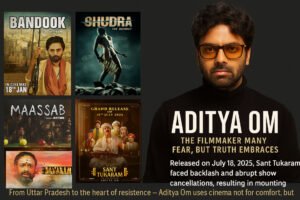There was a time when Indian history was said to begin with the Vedas. It was believed our civilization took shape in the lap of the Ganga, led by Aryans and Brahmins.
But that theory collapsed.
A Shocking Discovery in Punjab
While laying railway lines in western Punjab, some unusual bricks were discovered — pots, utensils, and remnants of buildings surfaced. What emerged from beneath the soil seemed centuries old. The matter was sent to the Archaeological Survey of India (ASI).
This was during British rule, and they were curious to know the truth. Excavation began. Indian archaeologists like Daya Ram Sahni and Rakhal Das Banerji, under Sir John Marshall, led the work.
That’s how Harappa and Mohenjo-daro came out of the ground.
A Civilization Older than the Vedas
A fully developed urban civilization existed on Indian soil — three thousand years before the Vedic age. This shattered the entire timeline and its narrative.
Because the Harappan people were not Aryans. They had to admit: Aryans came from outside. Some say they arrived peacefully with cattle; others say they came as horse-riding invaders. Whatever the theory, the existing narrative was disrupted.
Partition and the Cultural Shock
When India was partitioned, much of our ancient civilizational land — Harappa and Mohenjo-daro — ended up in Pakistan. It was a massive blow to cultural nationalism.
Now, 70 years later, that same cultural nationalism is trying to rise again. Its narrative says North India is the cradle of Indian (Hindu) civilization, which spread from there across the country.
But then something happened in the South.
Keezhadi — A Southern Disruption
Near Madurai, a man digging land for construction stumbled upon some ancient pottery. These pots were unlike those found in North India and bore more resemblance to Indus Valley artifacts.
An excavation was initiated at Keezhadi in Tamil Nadu.
By 2016, they had uncovered gold and silver coins, beads, painted pottery, structural remains — complete with pipelines, drainage systems, and water purification setups. They even found smelters for iron and bronze.
It was clear — this was an industrial metropolis. The script resembled the Indus Valley script.
All signs pointed to a civilization in South India older than the North, and likely connected to the Indus Valley Civilization.
Celebration or Suppression?
One would expect celebration — a new chapter in Indian history had opened.
Instead, funding was cut. The officer who led the excavation was transferred. He was pressured to withdraw his report.
Another officer was brought in, who quickly submitted a report saying there was “nothing of significance” found. Excavation was stopped.
The Legal Pushback
In 2018, some concerned citizens approached the High Court. The court asked if the state government would fund further excavation.
Tamil Nadu’s government said yes.
The dig resumed — and for the first time, the Sangam Era, once known only through literature, now stood with archaeological proof.
A Threat to Northern Supremacy
Because Keezhadi proves an ancient Dravidian cultural stream, independent from the North — it sparked identity politics.
At the center of the issue: Delhi’s interference in the excavation, and suppression of its findings.
It’s seen as an attempt by northern institutions to undermine the South, to preserve the myth that Aryan-led Hindu civilization is superior.
How ASI Became a Political Tool
Like many institutions, ASI too has shifted from being a professional, objective body to a politicized narrative tool.
Even the Ram Janmabhoomi–Babri Masjid verdict used ASI’s highly questionable reports.
One striking case is Sinauli in Uttar Pradesh. Though discovered in 2005, it was re-promoted in 2018, just as Keezhadi excavation was being obstructed.
Actor Manoj Bajpayee even narrated a full video on it — you’ll find it on YouTube.
Narratives as Political Narcotics
For the ruling regime, maintaining a specific historical narrative is essential. They inject this version of supremacy into the veins of their followers like a drug of pride.
Any truth that threatens this high is buried under the dust of lies.
And those who dig up the truth — be they historians, journalists, or comedians — are branded enemies of the state.
Truth Fears No Soil
Politics built on lies fears truth. It fears discovery, inquiry, and new facts. Because the more we excavate — the more clearly the grave of falsehood is revealed.
Translated from Manish Singh X Post
Tags: Keezhadi, Indus Valley Civilization, Dravidian History, Aryan Invasion Theory, Tamil Nadu Archaeology, ASI Politics, Cultural Nationalism, South Indian Civilization, Keezhadi Excavation, Dravidian Model, Historical Truth, Indian History Debate, Sangam Era, Archaeological Suppression, Political History India, Keezhadi vs Sinauli, North South Divide, M Karunanidhi, Tamil Pride, Ancient India, Dravidian Identity, History and Politics India, Indian Archaeology, Keezhadi Controversy, Hindutva Narrative, Truth vs Propaganda







More Stories
From Pudukkottai to Parliament: M.M. Abdulla’s Voice for the Voiceless
2 Lakh Per Capita — Without Delhi’s Help: Tamil Nadu’s Silent Economic Revolution – Kathir RS
Sivaji came to Tamil Nadu to kill his brother & Loot the wealth of Tamil Nadu?